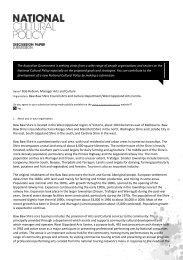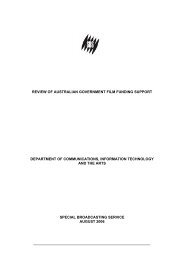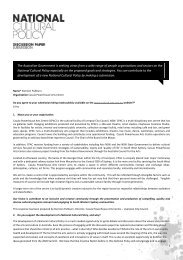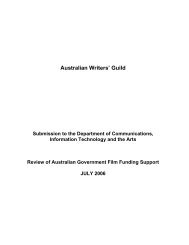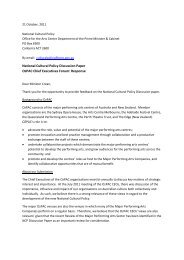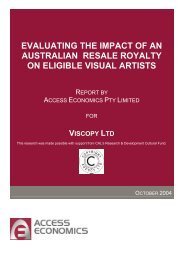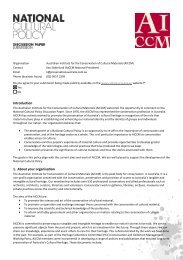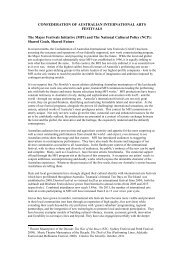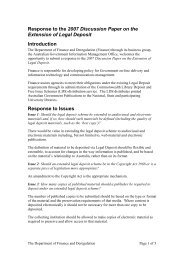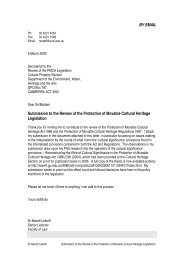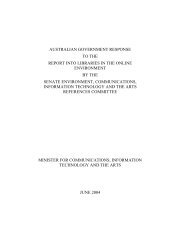National Association for the Visual Arts
National Association for the Visual Arts
National Association for the Visual Arts
You also want an ePaper? Increase the reach of your titles
YUMPU automatically turns print PDFs into web optimized ePapers that Google loves.
In addition, written contracts are rarely used in <strong>the</strong> visual arts. Mostgalleries simply provide an invoice or a receipt of sale ra<strong>the</strong>r than enterinto a <strong>for</strong>mal agreements. Most galleries operate on verbal contracts with<strong>the</strong>ir artists, even where <strong>the</strong>y are <strong>the</strong> exclusive gallery/agent <strong>for</strong> that artistin a particular city or state.Lastly, <strong>the</strong> contract can only bind those parties to <strong>the</strong> contract: <strong>the</strong> artistand <strong>the</strong> purchaser. The contract would have to provide that <strong>the</strong> purchaserobtains a similar promise from third parties. Again this may be viewed astoo restrictive on subsequent purchasers of <strong>the</strong> arts work. Few purchasersunderstand resale royalties and as with copyright, are likely to view it as atax.In <strong>the</strong> end , <strong>the</strong> poor bargaining position of most artists would mean that<strong>the</strong> inclusion of a resale royalty clause will be extremely rare. It wouldonly benefit <strong>the</strong> few extremely successful artists. They usually only havethis authority later in life and thus it would only be applied in relation to<strong>the</strong>ir later works.5. Are <strong>the</strong>re any unique features of <strong>the</strong> Australian art marketwhich need to be considered in designing a workable resaleroyalty scheme?One obviously unique element in Australia is <strong>the</strong> burgeoning ofIndigenous art production and consumption. Though Indigenous artistsare selling <strong>the</strong>ir work at comparatively low prices, <strong>the</strong> rapid gain in valueof <strong>the</strong>ir work as it is resold, with no benefit flowing through to <strong>the</strong>m, isone of <strong>the</strong> most pressing reasons <strong>for</strong> <strong>the</strong> introduction of resale royalty inAustralia. The fact that <strong>the</strong> DCITA discussion paper does not includefigures <strong>for</strong> resale through dealers and commercial galleries gives a verydistorted picture, particularly of Indigenous art sales which mostly takeplace through <strong>the</strong>se outlets. This pattern has only started changing thisyear with several of <strong>the</strong> major auction houses trying to secure a footholdin <strong>the</strong> Indigenous market, indicative in itself that <strong>the</strong>re are reasonableprofits to be made.The fact that Australia is an island has some bearing on <strong>the</strong> case <strong>for</strong> resaleroyalty, in that any suggestion that <strong>the</strong> imposition of <strong>the</strong> royalty wouldlead to a drain of works to be sold overseas is to be regarded withscepticism. Firstly <strong>the</strong> prices <strong>for</strong> work in Australia are lower than those inEurope and <strong>the</strong> idea that to save 5%, sellers would incur <strong>the</strong> ef<strong>for</strong>t andcost of packing and transport works overseas is highly unlikely. WithEurope introducing a resale royalty, <strong>the</strong> only o<strong>the</strong>r viable option would be




